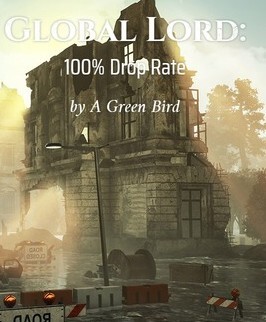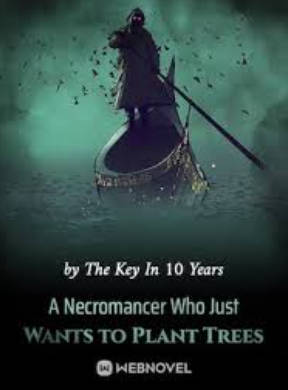Chapter 450 Sivash Lake
Shulka did not guess wrong, and even Shulka himself participated in the next attack... The 1st Guards Tank Brigade was not very strong, and it was divided into three sides, so of course the 1st Tank Battalion and the 1st Infantry Battalion had to go, not only To go up is still the main direction of attack.
The 1st Tank Battalion attacked from the east of Zhankoy.
The reason why this side was chosen was because the area was originally a place that needed to be cleared and occupied.
Zhankoy is to the north and east of Sivash Lake.
This Sivash Lake is a bit special. It is separated from the Sea of Azov by a thin and long sandbar. This sandbar is called Cape Arabat. Its narrowest point is only 270 meters, but it is 110 kilometers long.
This gives Sivash Lake some characteristics: high salt content, thick silt, shallow water...the deepest is no more than 3 meters.
During the Soviet Civil War, the army commanded by Frunze was forcibly crossed from here to the Crimea to annihilate the White Army and ended the civil war. This operation, Operation Pirikop, was recorded in history.
Today, part of the ammunition and supplies of the 1st Guards Tank Brigade attacking Zhankoi came from the direction of Lake Sivash... From Temryuksky through the Sea of Azov, the supplies can be sent directly to Zhankoy, or even After the Soviet army reoccupied the Kerch Peninsula, the nearest port was only a dozen kilometers away from Zhankoy.
Of course, at this time the Soviet army has not yet fully controlled the Kerch Peninsula, so the supply mainly comes from Temliuksky.
Therefore, attacking from the east is actually opening up a supply route for itself. This is an advantage of the Soviet army's command of the sea. Of course, the 1st Guards Tank Brigade must make good use of it.
Sponek doesn't seem to have thought of this, or even if he thought of it, he can't do anything... There are only four "Tiger" tanks in his hand.
These four tanks can only work if they are concentrated in one direction, otherwise there will be two tanks in each direction, and the swarms of tanks will not be able to stop them.
So, Sponek is not wrong on this issue. He can only use one kind of disguise, which is to pretend to call out the "Tiger Style" in the hope that the enemy will be fooled.
If Manstein personally commanded the battle, he would not be so stupid as to think that the enemy had been fooled, because Manstein knew that his opponent was a "breakout hero".
It's a pity that Manstein is not here. At this time, he is coordinating several support troops to Zhankoy, and on the other hand, he is commanding troops to attack Sevastopol... If Sevastopol can be captured quickly, Then the German army can solve the problem of encountering the enemy on both sides.
As for the details of Zhankoy's tactics, Manstein didn't know or ask at all.
But he still communicated with Sponek.
"How's the situation, Lieutenant General Sponek?" Manstein asked on the phone.
"It's not too bad, General!" Sponeck replied, "We successfully blocked an enemy attack and destroyed a dozen of their tanks... Those tanks worked, and they had an absolute advantage over the enemy's T34s. , it's a pity that the number is not enough, I hope they can send a few more!"
"There are only so many, Lieutenant General!" Manstein replied: "Even if there are, there is no time to deliver them!"
"Yes, General!"
"What you have to do is to defend until dawn! From now..." Manstein looked at his pocket watch and said, "There are still five hours left, is there a problem?"
"No problem, General!" Sponek replied.
"Our reinforcements will arrive at that time, and our fighters will provide you with full cover!"
"Yes, General!"
"Be careful!" Finally Manstein confessed: "You are facing the 1st Guards Tank Brigade, and your opponent may be the 'breakout hero'!"
"Yes, General!"
The communication between the two parties is nothing more than that.
Sponek did not report specific tactical issues to Manstein, because he believed that this was not what the commander of the 11th Army like Manstein needed to know.
On the other hand, Sponek did not take the "breakout hero" that Manstein reminded him to heart.
He even thought that Manstein was a joke.
Five hours, Lieutenant General Sponek believes it can be done.
However, at this moment, the whistling and explosion of shells sounded from the east.
As soon as he heard the sound of the cannon, General Sponek's expression changed, and then the adjutant reported to Sponek: "General, they are attacking from the east!"
"Is it their main force?" Sponek asked.
"Colonel Eric thinks so!" The adjutant replied: "Because they have many tanks, at least fifty!"
A tank brigade of the Soviet Army only had more than 100 tanks, and 50 tanks were invested in one attack, which was obviously the main force.
"Immediately transfer the 'Tiger' to the east for reinforcements!" Sponek ordered.
"Yes, General!"
"Turn the 'Tiger' to the east!"
"Turn the 'Tiger' to the east!"
…
But it's too late for talent now.
Soviet tanks "rumbling" ran over the anti-tank trenches built by the Germans.
The anti-tank trenches in this area are shallower and narrower than in other directions. This may be because this area is more humid near the lake, and it freezes harder at low temperatures, so construction is more difficult.
This allowed the tank to run over those anti-tank trenches effortlessly, then stopped and fired a shuttle of bullets and a shell into the darkness ahead... This is exactly what the tank was when the Soviet tank passed the anti-tank trench standard procedure.
Its main purpose is to wait for the infantry behind to keep up.
Tanks can easily cross the anti-tank trenches, but the infantry behind them need to jump off the anti-tank trenches and then climb up from the anti-tank trenches.
This is easy to say, but the anti-tank trenches are two or three meters deep. In fact, anti-tank trenches that are two meters deep are not qualified, and these anti-tank trenches are full of ice and snow, so it is very difficult to climb up. Of course it takes time.
If the infantry fails to keep up, then the tank is almost going up to die if it advances in the dark.
The method for Shulka and others to cross the anti-tank trench is to arrange two soldiers in each squad to put away their guns and squat half-squat to do lifts. One soldier came and stepped on their knees and shoulders, and then climbed up the two-meter-high trench. Anti-tank trenches.
Otherwise, the smooth anti-tank trench walls, and the soldiers are wearing heavy cotton-padded clothes with full-body equipment, it is really not easy to quickly cross.
Then the tank moves on after receiving the message that the soldiers have followed...this information can be passed on through the "tank phone".
Several of these tanks were destroyed by the Germans.
Spenneck arranged anti-tank guns in other directions.
But at this time, Shulka was relieved, because they were not destroyed by tanks. Under the light of the flares, it was clear that they were anti-tank artillery positions.
An anti-tank gun position can be suppressed and blown up with a mortar.
(end of this chapter)
RECENTLY UPDATES







